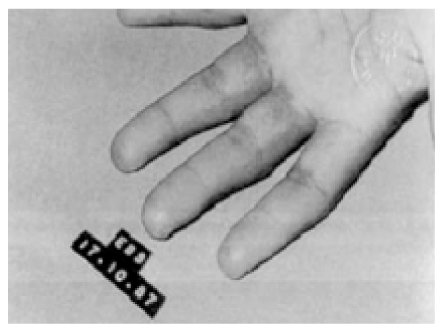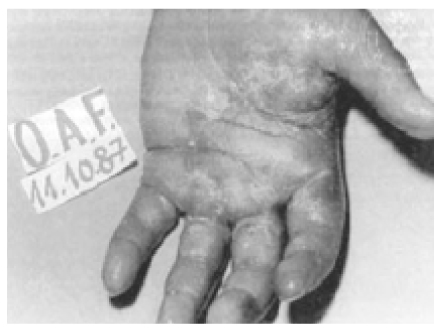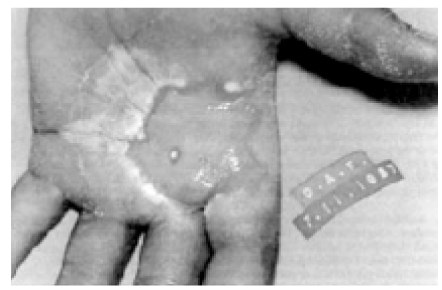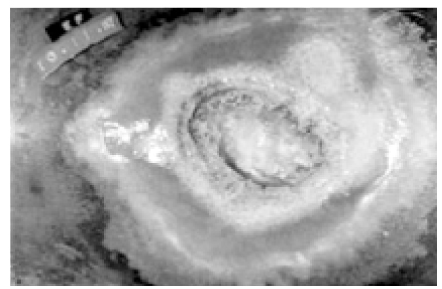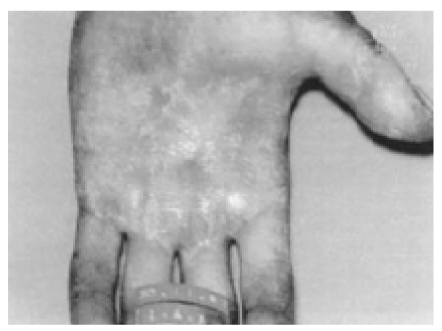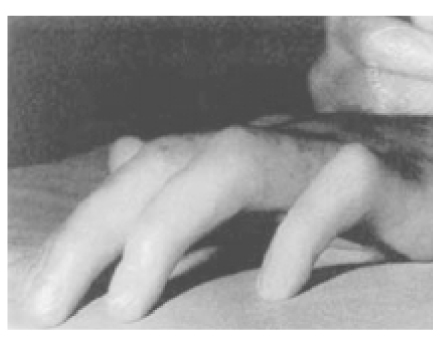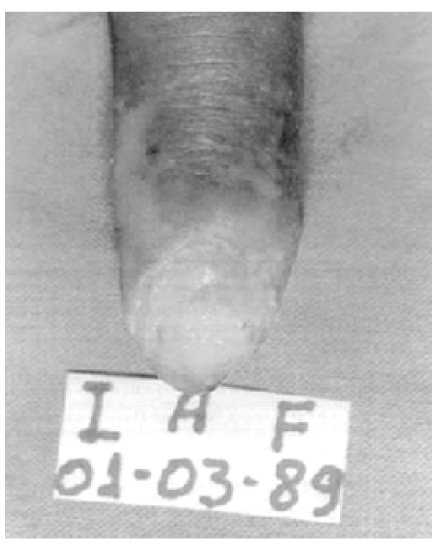J Korean Med Assoc.
2003 Oct;46(10):889-897. 10.5124/jkma.2003.46.10.889.
Diagnosis and Treatment of Local Radiation Injury
- Affiliations
-
- 1Department of Radiation Oncology, Korea Cancer Center Hospital, Korea.
- KMID: 1957983
- DOI: http://doi.org/10.5124/jkma.2003.46.10.889
Abstract
- The prognosis and medical handling of individuals exposed to external radiation depend upon whether the whole body has been exposed, or the exposure was localized. It is very important for the prognosis and choice of treatment to know how the absorbed dose has been distributed within the body. The dose distribution depends on the condition of exposure and the circumstances of the accident. Local radiation injury (LRI) is much more frequent than whole body exposure (WBE) and hence described in detail in a variety of literature. LRI caused by high doses of radiation (> or = 8~10 Gy) produces signs and symptoms similar to a thermal burn except for the striking delay in the onset of clinical changes, from several days to a week or longer. The severity of LRI depends not only on the dose and type of radiation, but also on the location and size of the area exposed. In general, the higher the dose received, the more rapid the development of pathological symptoms and the more severe the prognosis. Therefore, diagnosis and prognosis should be based upon various parameters, besides the clinical observation, such as dosimetry, reconstruction of the accident, thermography, scintigraphy, etc.
Keyword
MeSH Terms
Figure
Reference
-
1. IAEA. Diagnosis and Treatment of Radiation Injuries : Safety Reports Series, No. 2. 1998. IAEA.2. Gongora R, Jammet H. Localized radiolesion. Radioprotection. 1983. 19:143–154.3. Hopewell JW. Biological effects of irradiation on skin and recommended dose limits. Radiat Prot Dosim. 1991. 39:11–24.
Article4. Hopewell JW. The skin, its structure and response to ionizing radiation. Int J Radiat Biol. 1990. 57:751–773.
Article5. Oliviera AR, Brandao-Mello CE, Valverde NJL, Farina R, Curado MP. Localized lesions induced by Cs-137 during the Goiania accident. Health Phys. 1991. 60:63–66.6. Oliviera AR, Valverde NJL. Skin lesion associated with Goiania accident, II : Clinical experience and follow-up since 1979. The medical basis for radiation accident preparedness. 1990. New York: Elsevier North Holland;95–100.7. Nenot JC. Medical and surgical management of localized radiation injuries. Int J Radiat Biol. 1990. 57:783–795.8. Gongora R, Magdelenat H. Accidental acute local irradiations in France and this pathology. British Journal of Radiology. 1986. 19:supple. 12–15.9. McQuai HJ. Opioids in chronic pain. Br J Anaesth. 1989. 63:213–226.
Article10. Budd K. Recent advances in the treatment of chronic pain. Br J Anaesth. 1989. 63:207–212.
Article11. Nenot JC. Clinical management for localized overexposure. J Soc Radiol Prot. 1985. 5(1):55–58.12. Mertz PM, Eaglstein WH. Treatment of radiation injuries. 1990. New York: Plenum Press;165–174.13. Ross JP, Holly FE, Zarem HA. The medical basis for radiation accident preparedness. 1980. New York: Elsevier North Holland;205–221.14. Robinson DW. Surgical problems in the excision and repair of radiated tissue. Plastic and reconstructive surgery. 1975. 5:41–49.
Article15. Stern PJ. The medical basis for radiation accident preparedness. 1980. New York: Elsevier North Holland;257–263.16. IAEA. Dosimetric and medical aspects of the radiological accident in Goiania in 1987. 1998. Vienna: IAEA;70–81.
- Full Text Links
- Actions
-
Cited
- CITED
-
- Close
- Share
- Similar articles
-
- Expression of Interleukin-6 in Radiation Induced Lung Damage
- A Clinical Analysis of Delayed Radiation Necrosis of the Brain
- Chronic Radiation Dermatitis Induced by Endoscopic Retrograde Cholangiopancreatoscopy (ERCP)
- Radiation Induced Acute Lung Injury: Chest Radiographic Findings
- CT & MR findings of radiation-induced pulmonary injury

